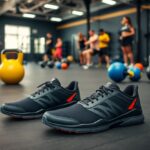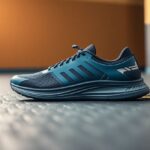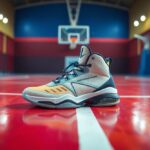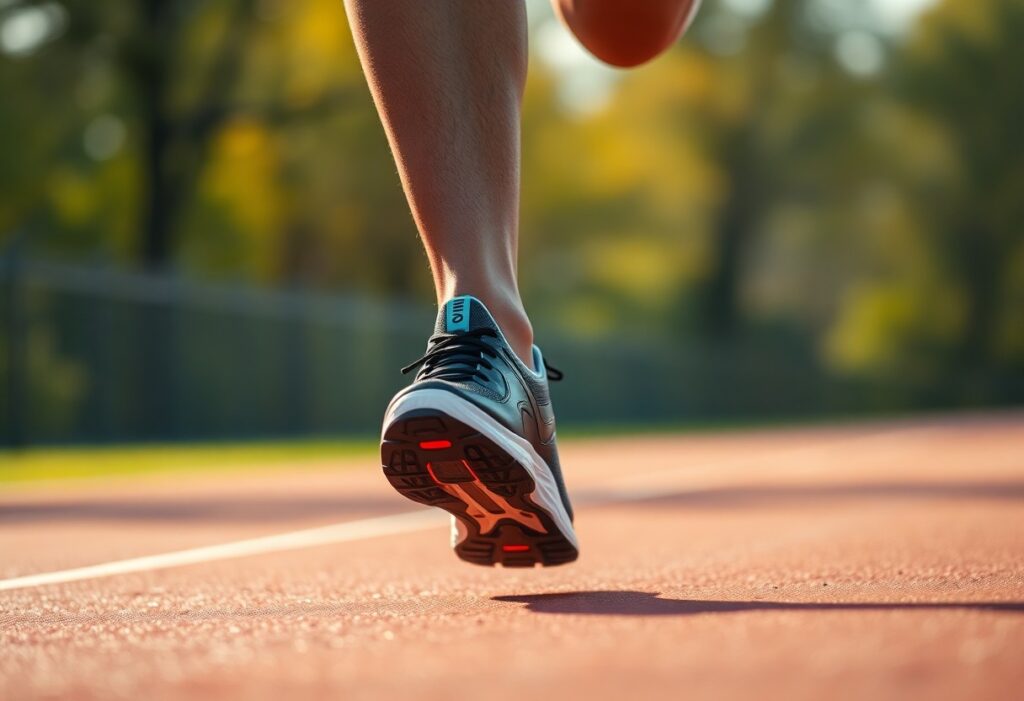
Delve into the revolutionary advancements in running footwear technology that have significantly reshaped the performance optimisation landscape for endurance athletes.
The landscape of performance optimisation in endurance running has been fundamentally transformed by advanced footwear technology, presenting unparalleled opportunities to maximise your athletic capabilities. You will uncover how innovative shoe designs can dramatically lower your metabolic expenditure and enhance running economy. By integrating cutting-edge carbon fibre plates and state-of-the-art midsole materials, these shoes deliver remarkable energy return mechanisms that have the potential to reduce your oxygen consumption by as much as 4%. Regardless of whether you are a seasoned professional athlete or a committed amateur, grasping these biomechanical advancements will empower you to make informed choices regarding your running gear and may significantly enhance your race times.
 Continue reading to gain a deeper understanding of the mechanics behind running footwear that promises to boost performance:
Continue reading to gain a deeper understanding of the mechanics behind running footwear that promises to boost performance:
Maximising Performance Through Understanding Energy Return Mechanisms in Advanced Running Shoes
Advanced running shoe technology employs intricate biomechanical principles to optimise energy transfer during locomotion. The innovative design elements of these shoes work in harmony to minimise metabolic expenditure, resulting in a sophisticated system that maximises running efficiency through meticulous material engineering and geometric configurations. By concentrating on the mechanics of energy return, these shoes provide runners with a significant edge in both performance and stamina, enabling longer runs with decreased fatigue and enhanced endurance.
Unveiling the Curvature Dynamics of Carbon Fibre Plates for Enhanced Running Efficiency
Carbon fibre plates utilise precise geometric engineering to redirect kinetic energy throughout the running motion. Optimal curvature angles between 12°-15° facilitate maximum energy storage and return, with finite element modelling indicating an impressive 93% energy return efficiency in prototype designs. These engineered plates create a spring-like mechanism that diminishes muscular work during the toe-off phases, allowing runners to conserve energy over greater distances, thereby leading to improved endurance and overall performance.
Evaluating TPU and EVA in Midsole Innovations for Optimal Performance
Material selection plays a pivotal role in shoe performance, with thermoplastic polyurethane (TPU) emerging as a superior choice for midsole technology. Comparative analyses illustrate TPU’s significant advantages in energy return and impact absorption, allowing runners to achieve enhanced biomechanical efficiency across various running conditions. The decision between TPU and EVA foam is critical for athletes aiming to optimise their performance while minimising the risk of injuries during both training and competitive events.
| Energy Return | 18% higher in TPU |
| Oxygen Consumption Reduction | 2.4% lower with TPU |
A thorough investigation into midsole materials reveals intricate performance characteristics. TPU showcases superior resilience in comparison to traditional EVA foam, maintaining consistent mechanical properties across thousands of compression cycles. Runners benefit from more reliable energy return, decreased fatigue, and enhanced long-distance performance through the innovations in advanced material science, which can have a substantial positive impact on their overall training outcomes and competition results.
| Impact Absorption | TPU absorbs 37% more force |
| Rebound Elasticity | 89% maintained across 50,000 cycles |
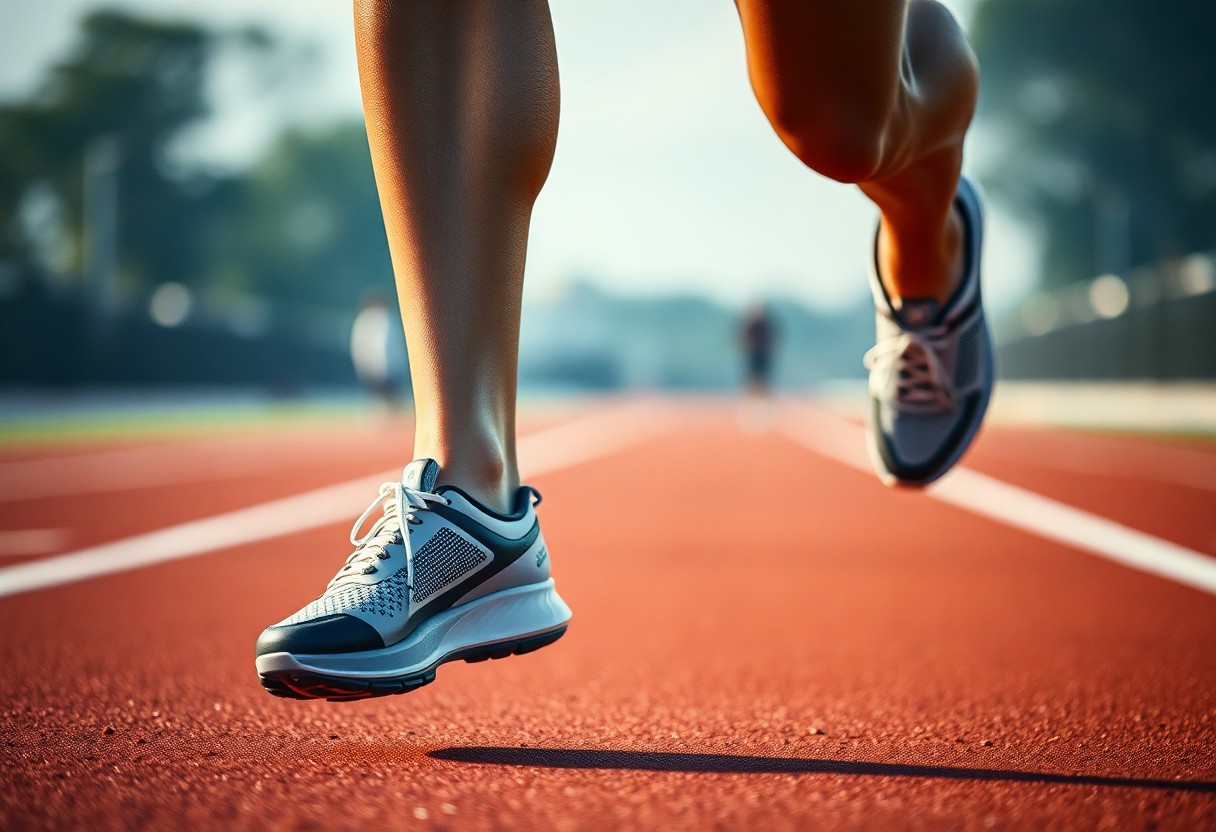 Explore further as we examine the effects of advanced footwear technology on metabolic efficiency:
Explore further as we examine the effects of advanced footwear technology on metabolic efficiency:
Evaluating Metabolic Efficiency: Identifying Who Gains the Most from Advanced Footwear
While advanced footwear technology is a boon for many, its effects are not uniform across all runners. Metabolic efficiency gains can vary greatly among different demographic groups, with factors such as gender, age, and individual biomechanics significantly influencing performance enhancements. Researchers have identified detailed patterns of metabolic response, demonstrating that the advantages of super shoes transcend mere performance metrics to encompass complex physiological adaptations unique to the biomechanical profiles of each runner.
Investigating Gender-Specific Performance Enhancements in Running
Research shows that female runners experience a 3.2% improvement in metabolic power, whereas males see a 4.2% enhancement, indicating intricate neuromuscular adaptations. Data on pelvic kinematics reveals a 14% greater reduction in hip adduction angle in females using advanced footwear, potentially elucidating the subtle differences in metabolic gains across genders. Understanding these disparities is crucial for tailoring training and footwear choices to maximise performance benefits for both male and female athletes.
Examining Age-Related Benefits for Endurance Performance in Older Runners
Masters athletes aged 40 and above display a 2.8% greater reduction in oxygen cost when utilising super shoes, likely compensating for the natural decline in tendon elasticity with age. Tibial loading analyses indicate a 12% cumulative stress reduction per kilometre in older runners, suggesting potential advantages in injury prevention and performance maintenance. These results underscore the significance of advanced footwear technology in prolonging the competitive lifespan of older athletes.
The age-related benefits of advanced footwear technology extend well beyond simple performance statistics. Biomechanical studies indicate that older runners experience more pronounced adaptations due to compensatory mechanisms. Decreased tendon stiffness and altered muscle recruitment patterns interact with shoe technology to create a distinct profile for performance enhancement. Specifically, the energy return mechanism provided by the carbon plate appears to counteract age-related biomechanical inefficiencies, potentially extending competitive running careers by alleviating the physiological constraints that typically accompany aging athletes.
Continue reading to uncover more about the implications of advanced footwear technology on injury risks:
Assessing the Impact of Running Footwear on Injury Risk Management
The introduction of advanced footwear technology brings forth intricate biomechanical interactions that necessitate a careful examination of potential injury risks. Runners must weigh the benefits of performance enhancement against physiological adaptations. Longitudinal studies illustrate subtle yet significant variations in muscular recruitment patterns, joint loading, and proprioceptive feedback that occur when transitioning to high-performance running shoes, highlighting the importance of a balanced approach to both training and recovery.
Injury Analysis: Understanding the Risks Associated with Enhanced Performance
Biomechanical research indicates a 9% increase in Achilles tendon strain rates among users of super shoes during high-intensity training. Plantar pressure mapping reveals a 22% increase in forefoot loading compared to standard trainers, particularly evident on challenging terrains like downhill running. These findings suggest that while metabolic efficiency may improve, runners must implement targeted strength and adaptation protocols to mitigate potential injury risks, ensuring long-term athletic health and performance sustainability.
Modifying Training Protocols for Optimal Gait Adaptation
Your biomechanical response to advanced footwear necessitates strategic adjustments in your training regimen. Gait retraining becomes essential to fully optimise the unique energy return mechanisms of carbon-plated shoes. Runners must aim to develop neuromuscular patterns that align with the shoe’s biomechanical design, which can help reduce injury risk and maximise performance benefits.
Implementing comprehensive gait adaptation strategies involves multifaceted approaches to effectively integrate advanced footwear technology. Biomechanical analyses suggest that runners typically require around 6-8 weeks of progressive training to adapt fully to the distinctive mechanical properties of super shoes. This adaptation period includes targeted eccentric strengthening protocols, modified interval training techniques, and close monitoring of lower limb biomechanics. Professional athletes and committed runners benefit greatly from periodic 3D gait analysis to track subtle shifts in movement patterns, ensuring optimal integration of advanced footwear technology with individual biomechanical characteristics.
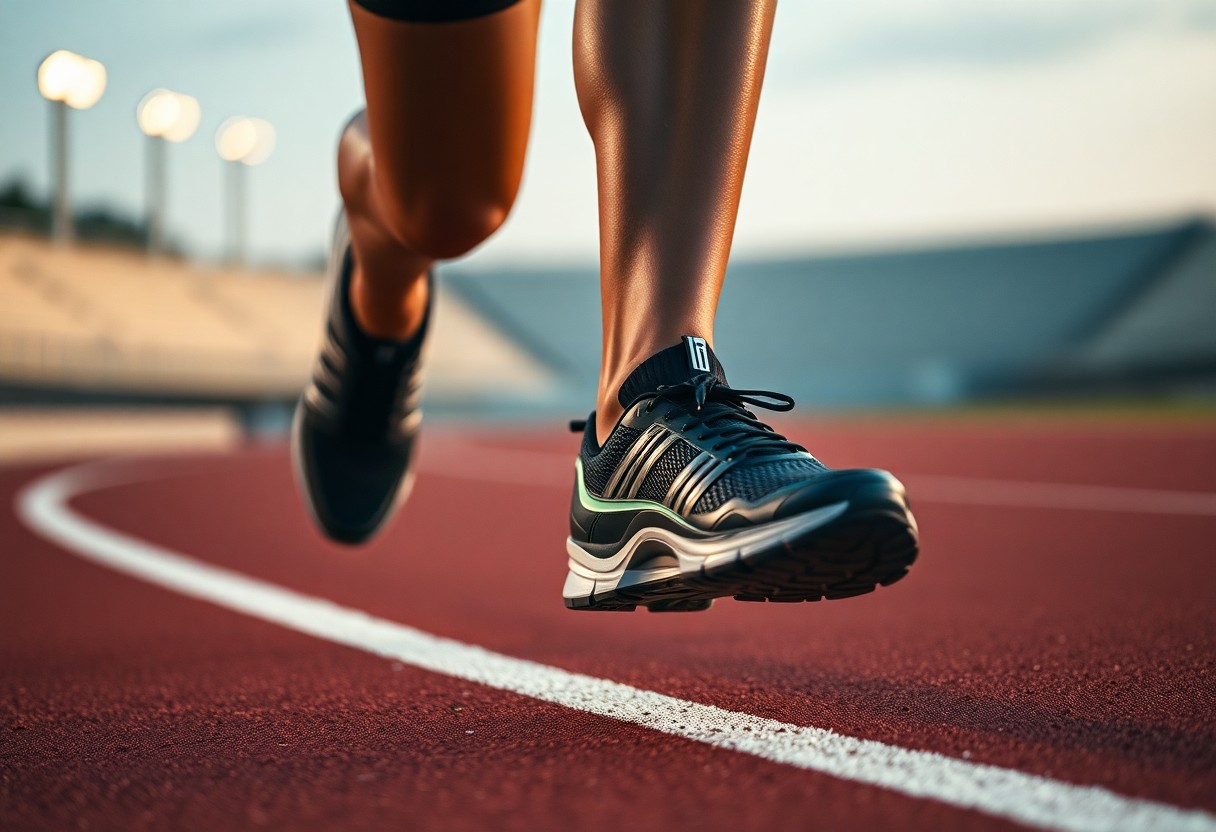 Explore the future of footwear technology and its implications for runners:
Explore the future of footwear technology and its implications for runners:
Anticipating Future Innovations in Running Footwear Technology
Emerging technologies are set to redefine the design of running shoes, pushing the boundaries of biomechanical efficiency and performance optimisation. Cutting-edge research is focusing on personalised solutions that adapt to individual biomechanics, harnessing advanced materials, computational modelling, and integrated sensor technologies to produce a new generation of intelligent footwear specifically designed for elite athletes.
Revolutionising Footwear Design with 3D Printed Midsoles for Customised Performance
Optimisation algorithms for lattice structures now enable precise variations in regional stiffness, aligning perfectly with the individual pressure maps of the foot. Prototype testing has demonstrated a 5.1% increase in metabolic savings compared to mass-produced models, with computational design facilitating unprecedented customisation of midsole geometries to maximise energy return while minimising biomechanical stress. This innovative strategy ensures that each runner can achieve optimal performance tailored to their unique physical characteristics and running style.
Integrating Smart Technology for Enhanced Performance Monitoring in Running
Emerging sensor technologies are transforming running shoes into advanced performance tracking devices. Real-time feedback systems for ground reaction forces can reduce oxygen cost by 1.9% through micro-adjustments in cadence, providing runners with immediate biomechanical insights during training sessions and competitions. These advancements are vital for athletes aiming to refine their technique and optimise their performance metrics.
The integration of advanced sensor technology marks a significant leap in performance monitoring capabilities. Multi-axis accelerometers, pressure-sensitive matrices, and embedded microprocessors are now able to capture intricate biomechanical data with exceptional precision. These smart systems analyse gait mechanics, impact forces, and energy expenditure in real-time, offering runners detailed insights into their movement patterns. Machine learning algorithms have the potential to forecast possible injury risks, optimise training loads, and recommend personalised technique adjustments based on comprehensive analyses of movement, effectively transforming running shoes from passive equipment into dynamic performance optimisation tools.
Lastly, gain a comprehensive understanding of the transformative landscape of advanced footwear technology in endurance running:
Embracing the Future: The Evolution of Advanced Footwear Technology
In summary, you have explored the transformative landscape of advanced footwear technology within the realm of endurance running. Your insights now encompass how innovative design elements such as carbon plates and high-performance midsole materials can significantly decrease metabolic costs and enhance running efficiency. By leveraging scientific knowledge, you can appreciate that these shoes provide more than mere incremental gains—they signify a paradigm shift in athletic performance. Investing in such technology could potentially lead to improved running economy, reduced energy expenditure, and optimised biomechanical responses across a diverse range of athletic demographics.
The Article Biomechanical Efficiency of Advanced Footwear Technology: Metabolic Cost Reduction and Performance Enhancement in Endurance Running appeared first on My Shoes Finder.
The Article Biomechanical Efficiency in Advanced Footwear for Runners Was Found On https://limitsofstrategy.com

